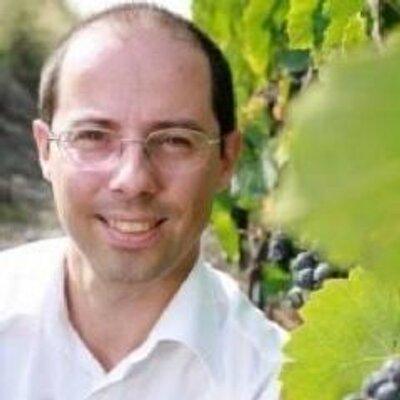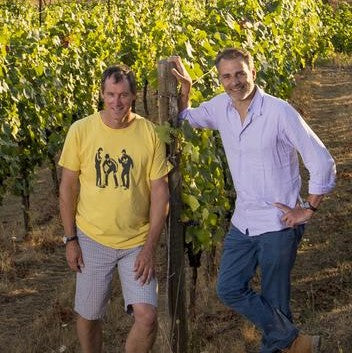by David Furer
Dr. José Vouillamoz is one of the world’s few, and leading, authorities on the origin and parentage of grape varieties through DNA profiling. The Swiss grape geneticist trained with Prof. Carole Meredith at UC-Davis and co-authored with British Masters of Wine Jancis Robinson and Julia Harding the award-winning book ‘Wine Grapes’. The 2012 publication is the ultimate reference on all the world’s cultivated wine grape varieties. Vouillamoz has also authored and co-authored several scientific papers and other grape books while an engaging speaker on the science, history, and enjoyment of wine. We had a chance meeting in my former home of Brighton, England at last month’s International Cool Climate Wine Symposium.
What inspired you to pursue this singular field of research?
Alcoholism. (laughter) Seriously I trained as a botanist, I’m a biologist, and I used DNA profiling of the particular obscure genus of plants which became my Ph.D thesis at the U. of Lausanne. There was only one study in Switzerland which had done DNA plant profiling research, and at that time I was becoming a wine lover, so in 1999-2000 I thought about applying this to grapes. Prof. Carole Meredith of UC-Davis had already used DNA profiling in 1997 signifying the parents of Cabernet Sauvignon showing that it was a spontaneous cross of Cabernet Franc and Sauvignon Blanc, something which then had tremendous impact on the wine world. I wanted to do the same with Swiss grapes, so I applied and was given a grant by the Swiss government to do post-doctoral research. I did that at UC-Davis for one year to learn the technique but to use only on my samples of Swiss grapes.
Your first publication focused upon the history and genes of grapes from the somewhat neighboring, somewhat parallel valleys of Switzerland’s Valais and Italy’s Valle d’Aosta. Why’d you choose these areas of wine production relatively unknown by those outside their immediate environs for your first publishing venture?
It was frustrating and exciting simultaneously. At UC-Davis almost no one knew we’d made wine and hadn’t known of these varieties. I took more than 100 samples from both areas along with almost everything I could find from Savoie, Valtellina, Trentino, some from Austria to circumvent Switzerland to increase the chances of finding parentages…which I did, and found that the parents of Switzerland’s preeminent red Cornelin were two from Italy’s Aosta Valle, Petit Rouge and Mayolet. This made sense that it was born long ago in Aosta Valley then introduced into the neighboring valley of Valais as both were well-connected even back to Roman times with the notable ‘Via Francigena’. The regions even have same the same dialect…even the same cow breeds. It was heartbreaking for the Swiss that their native grape originated not from there but from a different valley, a different nation.
What’s the value the greater wine world may find in grapes, in wines from there?
For Swiss wines to have an impact we’d have to export more than the 1% of what it makes today. Outside Switzerland it had no impact. But the more stories you have about a wine the easier it can be to sell it.
What human-generated factors have contributed most to the development and spread of vitis vinifera?
The most important was to get drunk, the ‘paleolithic-hypothesis’. The paleolithic people, mostly those gathering grapes (women) from wild vines. Maybe they saw birds eating these wild berries which wound themselves up trees with the species propagating itself by the birds defecating the seeds. They would have taken the berries to the gathering site, placed them in a crevice where the juice would’ve have left the berries, the naturally-occurring yeasts fermenting the juice. When tasting the fermented juice they would’ve had a feeling of having become emotionally elevated, closer to their gods. For the domestication of the grapevine they would’ve taken them from the wild then plant them at their homes. The wild vine is dioecious, so you must have both male and female plants to pollinate for propagation. But the 1-2% of vines that were hermaphroditic mutations likely became the ones which were domesticated for viticulture.
What may US winegrowers learn and benefit from the indigenous grapes of vinifera’s Caucasus homeland?
Until now there are very few varieties from there that have been tried elsewhere; a few trials in the US, in Australia of Saperavi and Rkatsiteli, but there’s a huge collection of ancient varieties never used elsewhere. Some of them can perform well, and I’m convinced that the US market they could do well as Americans are open to new experiences with wine. But there’s still a lot of work to do.
Please explain the concept of “eco-geographical groups” as it pertains to vinifera.
The concept was introduced by a Russian botanist called Alexander Negrul, a genius from the 1930s. He wanted to classify all varieties in all logical groups based on the shape of their leaves and geographic origin. He found that by doing this he found that there were three large groups called Proles—Occidentalis which encompasses almost everything we drink as wine, Pontica between central Europe and Asia, and Orientalis which are more akin to table grapes such as Chasselas and Muscat. In the 1950s Louis Levadoux learned Russian just to read Negrul’s work because he wanted to do the same with all the French varieties. In doing so he introduced the concept of “eco-geographical groups” to the world. He named ‘Serines’ containing all varieties similar to Syrah. 50 years later with DNA profiling we confirmed almost everything Levadoux had found. We’ve completed this for France but not for elsewhere. We should do this also for Spain, Italy, Greece but there aren’t enough ampelographers, not enough money yet to support this research.
So, with Zinfandel now fully sorted out, what’s the origin of Syrah if not Persia/Iran?
It never was called ‘Shiraz’ until the Australians mistakenly named it that. Carole Meredith at Davis, with help from Montpellier’s INRA, in 1998 proved that Syrah was a spontaneous cross between SE France’s Dureza from Ardeche and Mondeuse Blanche from Savoie both of which are still grown in small quantities. Dureza is extremely spicy and tannic, so you can understand how this transmitted itself into Syrah.
Why are some varieties subject to greater frequency of mutation than others?
This is a false belief, it’s never been proven. We constantly hear that the millennia-old Pinot is more prone to mutation—but it’s only older than other grapes. So the accumulation of mutations for this older variety is greater than other varieties. The more recently created Müller-Thurgau has fewer morphological diversity than Pinot only because it’s younger.
Which climatic conditions contribute most to the frequency and/or intensity of genetic variation?
If the climate has an effect upon the diversity of varieties it’s then epigenetic occurrence. In my studies there’s no link between climate and the diversity. You can have an empiric adaption in a variety if you're in a more humid climate zone than in the original region that if you have the chance to select a clone that’s more resistant to mold pressures as it’d be more adapted to the new climate because it had developed disease resistance. I imagine this would be an advantage for clonal diversity. Some clones are better adapted to cooler, more humid, higher elevation environments. But it’s not the climate itself that influences genetics in this case.
You recently enjoyed the company of musician (Tool, Puscifer) and winegrower (Caduceus Cellars) Maynard James Keenan. As a scientist, how do you view the intersection of art and wine?
There’s no scientific evidence of artistic enjoyment. Art and wine are really correlated in terms of how, as human beings, we enjoy something from outside us with our senses. Both involved senses and both break to our emotions. Many times when I want images to describe a wine I use musical references. Some wine can be described as simple like a a Justin Bieber song while others can be intriguing like a Tool song; you might not understand or like it at first but soon grow to understand and appreciate it. Some wines are like this. Wine tasting with different types of music can be described differently due to which music accompanied it.



